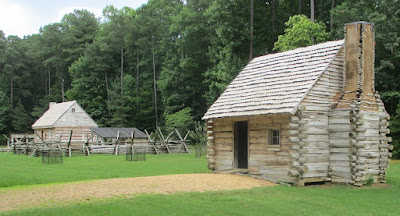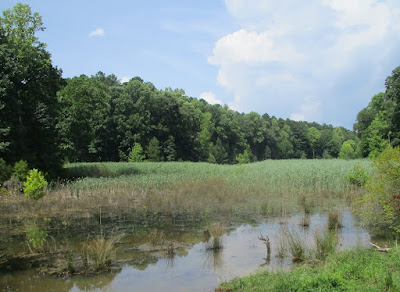Today I visited Freedom Park, which is run by the James City County government. The park includes the Williamsburg Botanical Garden, trails for hiking and biking, and a reconstruction of an early free black settlement. In 1804, a plantation owner in the area named William Ludwell Lee emancipated his slaves in his will, and allowed them to live rent-free on his land for 10 years afterwards. This first picture shows two of the houses, reconstructed from the archaeological record.
The first house belonged to a former slave named John Jackson, the house being seen to the right in the picture above, but seen by itself in this shot.
The second house belonged to former slave Anthony Brown and his wife Rachel, and had a few surrounding structures.
Behind the Brown house is this structure, which I think might have been a chicken coop. What other animal might have lived in it?
In the background of the above picture is the house of an artisan named Juba Lightfoot. He had not been one of William Ludwell Lee's slaves. Due to his work as a bricklayer and plasterer, he was somewhat wealthier than his neighbors, which is reflected in the style of his house.
After visiting the reconstructed settlement, I drove to another part of the park and took a hike. A paved trail goes past a cemetery surrounded by a wooden fence.
The trail continues into the forest behind the cemetery and eventually leads to Colby Pond, part of which is shown here.
I eventually turned back and stopped by the cemetery for one last shot.








No comments:
Post a Comment